The word “sulfur,” in my mind, is inexorably linked back to Mr. Burcik’s high school chemistry class, when we were given soft, pungent, yellow chunks to mix with other chemicals. When elemental sulfur is exposed to air, it forms sulfur dioxide, which burns the inside of the nose and stinks up the whole chemistry wing of the building.
Sulfur isn’t just about the pungent sting of a burnt match, though, and in wine it’s not just about the presence of sulfites. Sulfur-based aroma compounds are found at all stages of the winemaking process, and can range from downright noxious to fruity and pleasant. Let’s take a look at some of the various sulfur-containing aroma compounds found in wine.
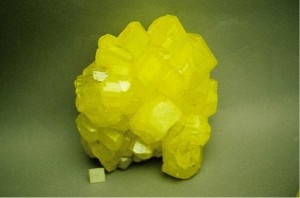
Sulfites
Perhaps when we hear of “sulfur” in wine, we think first of sulfites. The term “sulfites” refers to the various forms of sulfur dioxide present in wine. The original application of sulfites was burning sulfur candles in amphorae (the clay vessels used to make wine in ancient times). Ancient winemakers (be they Greeks, Armenians, Egyptians, or Romans, depending on whom you ask) probably didn’t know why burned sulfur (sulfur dioxide, or SO2) helped preserve their wine, but the use of sulfites has been fairly ubiquitous in winemaking since and continues to this day.
Sulfites are used for many reasons in winemaking to (1) inhibit growth of wild yeasts and bacteria, (2) bind with acetaldehyde and other oxidizing molecules, preserving color and aroma, and (3) inhibit some polyphenol oxidases in grape juice, reducing browning.
The aroma characteristics of sulfites are unmistakeable and can be obvious when a winemaker has been heavy-handed. The best descriptor I can think of is struck match, but there is more to smelling sulfites than aroma. Sulfites create a trigeminal response, meaning they irritate the nasal passages, creating a stinging sensation.
Sulfides and Mercaptans
If sulfites are regarded as oxidized sulfur, then sulfides and mercaptans are at the other end of the oxidation spectrum: reduced sulfur. These compounds have a real stink to them.
Hydrogen Sulfide
If you’ve ever made wine, been around winemaking, or even opened a stinky bottle of wine (had a bad experience with a Languedoc recently… whoa!), you probably are familiar with the smell of hydrogen sulfide (H2S). It smells like rotten eggs, and it’s commonly found in wine.
This malodorous molecule can come from two sources during fermentation: (1) excessive elemental sulfur sprayed on grapes and (2) nutrient deficiency in yeast. The first case seems easy enough to understand (sulfur is reduced by yeast enzymes), but the origins of H2S due to yeast nutrient deficiency are slightly more subtle.
Yeast require a source of nitrogen to complete fermentations. Low nitrogen can lead to stuck, and as many home fermenters know, stinky fermentations. In the absence of nitrogen, which is a principal component of the protein building blocks, yeast will begin to degrade amino acids in order to make the specific amino acids they need. When sulfur-containing amino acids like cysteine and methionine get degraded, they release sulfur groups that are processed into various sulfur-containing compounds, hydrogen sulfide among them. To prevent this, winemakers often measure YAN (yeast available nitrogen), supplement fermentations with yeast nutrients, choose yeast strains carefully (if inoculated), and aerate the fermenting wine.
Hydrogen sulfide in wine can suppress perception of fruit aromas, even if it’s below the point where the wine smells like rotten eggs. Luckily for many wine drinkers, it is very volatile and blows off quickly. It has been speculated that decanting wine (or just aerating if all you’ve got is a pitcher) can aid in perception of fruit and other pleasant aromas by blowing off hydrogen sulfide.
Mercaptans and Disulfides
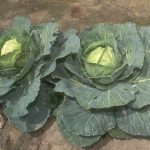
Another set of players in our sulfurous rogue’s gallery are the mercaptans. These sulfur compounds are also formed by the degradation of amino acids and smell rather like some cruciferous vegetables. Examples include methyl mercaptan (cabbage, garlic, burnt rubber) and ethyl mercaptan (the compound added to natural gas to warn us of gas leaks). The human nose is highly sensitive to these compounds (detected in the low parts-per-billion range). Winemakers can diminish the amount of mercaptans by copper fining, but this practice is risky given the legal limits on copper in wine in many countries. This could be one reason why the Romans drank from goblets of copper and lead, another heavy metal that binds mercaptans. Indeed, if you smell some of these aromas in a wine and can find a pre-1982 copper penny (modern pennies are mostly zinc), you could try a copper fining experiment for yourself by dropping the coin in your glass.
But as if mercaptans didn’t sound bad enough, these compounds can react (sometimes with each other) to form sulfides. Examples include dimethyl sulfide (canned corn, seafood, cooked cabbage) and methyl ethyl sulfide (onion), ethyl disulfide (rubber) and dimethyl trisulfide (fish, cabbage). Sulfides and disulfides cannot be fined with copper. In fact, there’s not much a winemaker can do to get rid of them. Luckily, sulfides and disulfides are perceived at a higher threshold than mercaptans and usually are not present in high enough amounts to be detectable in wine. However, disulfides can still be problematic while aging in the bottle. (see inset)
Aside: Screwcaps and Reduction
The composition of many sulfur compounds in wine depends on what is known as the reduction-oxidation (redox) potential in wine. During fermentation, wine is a chemically reducing environment, where mercaptans and thiols can thrive without fear of reacting with other thiol groups to form disulfides. After fermentation ends, the redox potential of a wine becomes more oxidizing (by aeration, racking, etc.). If mercaptans are around in high enough numbers, they can react to form disulfides. If they are below the detection threshold, these might go unnoticed by the winemaker and bottled with the wine.
What does this have to do with screwcaps? Closures, it turns out, have an awful lot to do with the redox state of a wine. Some closures allow lots of oxygen ingress (synthetic cork, bag in box, etc.) while some allow little oxygen (a good natural cork) and some barely any oxygen at all (screwcaps). It’s been speculated that the small amount of oxygen ingress can stabilize disulfides in bottle, preventing them from breaking apart into the more potent mercaptan aroma compounds. This could explain why a “reductive” fault or flaw is often attributed to screwcapped wines, and the screwcap is given the blame. Whether this is justified or not is up for debate, and some would argue that screwcaps help preserve volatile thiol aromas like passion fruit and grapefruit (think about New Zealand Sauvignon Blanc, religiously bottled under screwcap). There is still considerable debate on this topic as screwcaps become more widely adopted around the world.
Volatile Thiols
Volatile thiols are another set of sulfur compounds that affect wine aroma. In truth, thiols and mercaptans are the same type of molecule 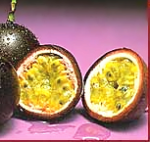 (both have -SH groups), but in most wine circles, the difference is lexicographical. Thiols smell good and mercaptans smell bad. It’s kind of like how “finish” is good but “aftertaste” is bad. Anyway, one notable volatile thiol 4-mercapto-4-methylpentan-2-one (4-MMP), a common descriptor of which ranges from “boxwood” to “cat pee”. It’s a major contributor to the varietal character of Sauvignon Blanc. Other thiols include 3-mercaptohexanol (grapefruit, passionfruit) and furfurylthiol (coffee, toasty oak, popcorn).
(both have -SH groups), but in most wine circles, the difference is lexicographical. Thiols smell good and mercaptans smell bad. It’s kind of like how “finish” is good but “aftertaste” is bad. Anyway, one notable volatile thiol 4-mercapto-4-methylpentan-2-one (4-MMP), a common descriptor of which ranges from “boxwood” to “cat pee”. It’s a major contributor to the varietal character of Sauvignon Blanc. Other thiols include 3-mercaptohexanol (grapefruit, passionfruit) and furfurylthiol (coffee, toasty oak, popcorn).
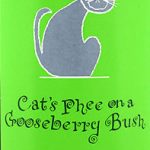
Most volatile thiols are produced by grapes themselves, but are present in grape juice in a kind of “masked” form. Many are found conjugated to the sulfur-containig amino acid cysteine (remember cysteine?). During fermentation, however, yeast enzymes separate the volatile thiols from cysteine, allowing their fruity aromas to be perceived. The French enologist Emile Peynaud described this mechanism as a way to taste some of the tropical flavors found in Sauvignon Blanc grapes: holding the juice in the mouth for a bit and allowing the natural enzymes in saliva to release the aroma compounds. Only recently (after his death) was he proven right.
Sulfur roundup
Many prominent aromas in wine are derived from sulfur-containing compounds. Some of them are off-putting (e.g., cabbage and rotten eggs), while some are pleasant and give wines their very varietal character. We have discussed some of the major groups of sulfur-containing aromas in wine and some ways winemakers can modify them to their advantage, either by copper fining, aerating, or by choice of closure.
| Sulfur compound | Smells like… | Origin in wine |
| Sulfur dioxide (aka sulfites, SO2) | struck match | Produced naturally by yeast, added as a preservative/antioxidant/antimicrobial agent. |
| Hydrogen Sulfide (H2S) | rotten eggs | Nitrogen deficiency during fermentation leading to metabolism of sulfur-containing amino acids, reduction of residual sulfur |
| Mercaptans (Ethyl mercaptan, methyl mercaptan) | burnt rubber, garlic, natural gas leak | Nitrogen deficiency during fermentation leading to metabolism of sulfur-containing amino acids |
| Sulfides (Dimethyl Sulfide, Ethyl Methyl Disulfide, etc.) | canned corn, garlic, cabbage, rubber | Oxidation of mercaptans |
| Volatile Thiols (3-MH, 4-MMP, furfurylthiol) | fruity: grapefruit, passion fruit, boxwood, toasty | Found naturally in grapes as s-cysteine conjugates, released by yeast enzymes during fermentation |
I hope that next time you encounter any of these aromas, you’ll know what to do and where they come from in the winemaking process. Hydrogen sulfide will blow off with aeration, mercaptans will bind to a copper penny, and volatile thiols may appear only after a few seconds in the mouth. There are many more known sulfur-derived compounds in wine, so get out there and smell the sulfur!
Further reading
Jamie Goode article on screwcaps and sulfur compounds
Descriptors of many aroma compounds: Flavornet
Great overview of sulfur in wine: Modulation of Sulfur Compounds by Wine Yeast
Perception of S-Cysteine Conjugates of Volatile Thiols
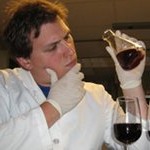
Tom Mansell is a PhD candidate in chemical engineering at Cornell University in Ithaca, NY. He is borderline obsessed with the science of wine and winemaking. His blog, Ithacork, focuses on Finger Lakes wines and always includes a “Science!” section, which gets down to technical details for the hardcore wine geek. He is also the Science Editor for The New York Cork Report. Follow him on Twitter @mrmansell.
